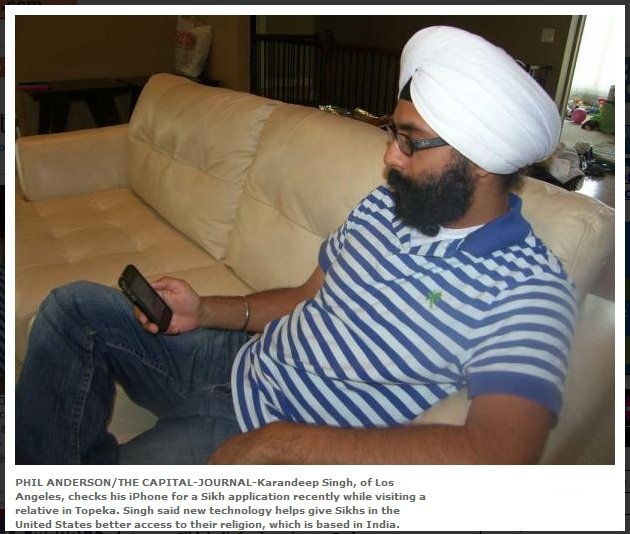
Adherents of the Sikh faith may be few and far between in Topeka and other parts of the nation, but many are finding they can connect with their India-based religious traditions — thanks to modern technology.
Sikhs in the United States increasingly are turning to wireless devices, such as smartphones, and the Internet to learn more about their faith and to find support for their practices.
New technology particularly is opening up Sikh traditions to a younger generation that may not have had access previously to the religion’s sacred texts or religious ceremonies.
Among Sikh beliefs: there is one God, present everywhere; all human beings are considered equal; and the goal of life is to become one with God.
For more than a dozen years, Sikhs in the United States have utilized satellite television channels that air religious broadcasts from India on a 24/7 basis.
The broadcasts are helpful to many Sikhs on a daily basis, but particularly during major holidays like Diwali, a festival of light that was celebrated recently.
Some broadcasts take place from Sikh places of worship — called Gurdwaras — in India, including the Harmandir Sahib, also known as the Golden Temple, in Amritsar; Bangla Sahib; in Delhi; and Hazoor Sahib; in Nanderr.
Angad Singh, 24, a student at the University of Michigan in Ann Arbor, Mich., who was visiting relatives recently in Topeka, said it can be “very difficult” to gain access to sacred Sikh texts outside of technology.
Singh pulled out an iPhone and searched the Guru Granth Sahib, the Sikh religious text, which is now easily accessible through iPhone applications. The texts are included in various Indian languages and also are transliterated so they can be read by those whose primary language is English.
Translations also are provided on the Internet and through iPhone apps. The translations are another tool to help Sikhs become better familiarized with what a text is saying.
Singh also said a unique aspect of Sikhism is that the Guru Granth Sahib is arranged not by subject matter, but according to musical scale, which accentuates meaning through sound and mood.
“Everything is poetically written,” Singh said.
Using his iPhone, he logged onto a site from the United Kingdom where Sikh hymns were being performed live.
Website programs also are available with PowerPoint presentations, allowing Sikhs who gather for worship in a Gurdwara or a home to follow along with what is being said or sung.
Topekan Daljit Singh Jawa, who said his household is one of three Sikh families known to live in the capital city, said he has been working on an English explanation of the Guru Granth Sahib for the past 15 years.
Jawa said he is about two years from completing the project, and that he already has publishers lined up for hard copy and Kindle versions.
Tejpreet Kaur Nakai, 29, of Los Angeles, who also was in Topeka recently, said beyond religious-themed Sikh websites, some blogs help connect longtime practitioners of Sikhism to other individuals who may not be as connected to the faith or who may live far away from a Gurdwara.
This may be helpful for Sikhs in Topeka, as the nearest Gurdwara is in Kansas City, Mo.
